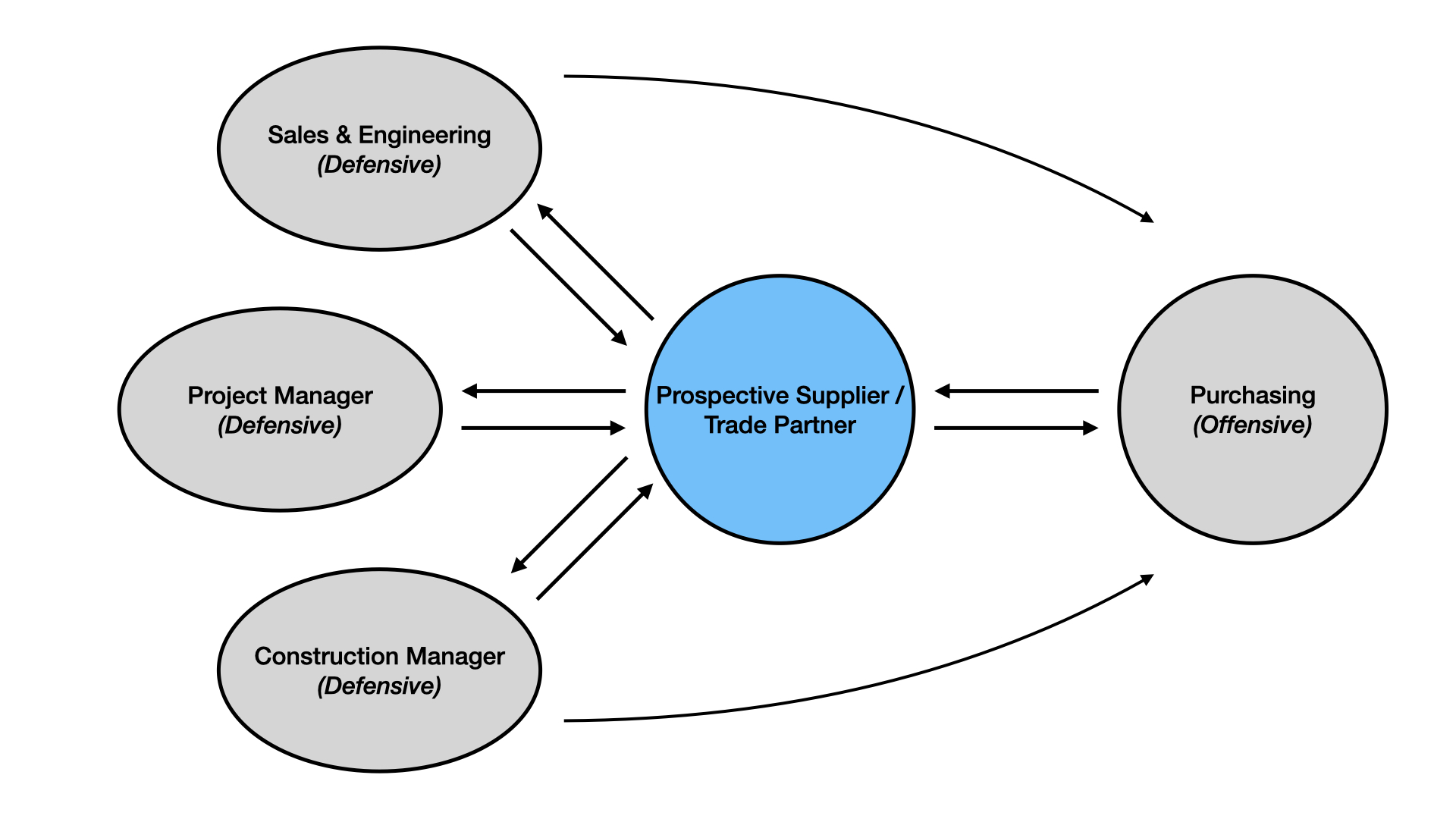Always Be Conditioning
 ⏲ 5-minute read | Photo by DALL·E 3 "Conditioning" | last updated 1 year, 5 months ago
⏲ 5-minute read | Photo by DALL·E 3 "Conditioning" | last updated 1 year, 5 months ago
It’s the mantra virtually every trainer in every negotiation class will tell you. If you learn nothing else, remember your ABCs: always be conditioning.
Why?
Conditioning, at its core, is information control. It's having a consistent message that (in all aspects of communication), aligns with your intended outcome.
The conditioning pendulum is always swinging one way or the other; that is, you’re either being conditioned or you’re the conditioner.

Giveaways
Interactions like phone calls, meetings, redline exchanges, and presentations with suppliers always require tight information control and a key focus on messaging. Without strong, practiced habits in this area, you give away valuable leverage.
Here's an example of conditioning going well for the supplier and badly for the buyer (related to a price increase request, conveyed via a phone call).
Scenario #1:
Supplier: "Hi, this is ABC company. I'm calling to let you know that inflation this year has been tough on us all; and while we've managed to hold your pricing for the past two years, we have to raise our price 8% across the board, effective January 1."
Buyer: "Oh, wow, we weren't expecting that, we can't do 8%. I'd like to see some backup documentation and set up a meeting to discuss this further."
Buyer Translation: We can't do 8%, but we can do something a little bit less than that, as long as you bring us some proof to the meeting I just asked for.
Scenario #2:
Supplier: "Hi, this is ABC company. I'm calling to let you know that inflation this year has been tough on us all; and while we've managed to hold your pricing for the past two years, we have to raise our price by 8% across the board, effective January 1."
Buyer: "Oh, wow, we were actually projecting a decrease this year, and this is going in the wrong direction. I want to discuss this further, let's set up a meeting for next week, and please be prepared to discuss how we're going to offset this increase and get back on track to meet both our goals for this fiscal year."
Buyer Translation: We want the price to go down, not up, and you need to show us how you're going to do that at the next meeting.
Scenario #2 positions the buyer better for the meeting to follow. The buyer has returned the pendulum to the center. Regardless of whether the supplier shows up with ideas to offset, they have accomplished two things:
- The scope and extent of the price increase are likely to be smaller; and,
- Any offering from the buyer will appear more valuable.
This is the profound power of conditioning. If you understand the message being delivered to you, and control your message, the results can be significant.
Offensive / Defensive Roles
Depending on your role in the organization, you may need to condition offensively or defensively. Take this simple example of a procurement relationship with a prospective supplier.

There are many parties involved. A savvy supplier (blue, above) will be offensively working to condition all business units for its preferences and intended outcome.
It takes a coordinated effort to ensure that your entire organization is delivering a clear and consistent message to the supplier, or else you will lose your leverage. In this example, if you're in purchasing, then the coordinated message from each of the three business groups on the left may be:
- Sales & Engineering - Endorsement/deferral
- Project Manager - Agreement with approach
- Construction Manager - No opinion
You learn conditioning techniques so they can be applied tactically, and this often yields a significant negotiation advantage1.
- Best case, you gain the advantage by setting expectations with the other party.
- Worst case, expectations are set by the other party, and you are significantly disadvantaged (you may even have those inside your organization working against you).
- For sophisticated negotiations by seasoned professionals - conditioning nets out to zero (this is the best you can hope for in this case, and the negotiation turns to the topic at hand).
This is what makes the understanding and application of conditioning critical. There's no universe where not knowing is beneficial.
My Role is Internal. What Conditioning?
“But I don’t do negotiations in my role”. Sure you do.
You’re negotiating with everyone, all the time. If you have an opinion on how things should be done, and you’re talking about it, it’s an opportunity for conditioning. It makes this skill applicable to virtually every engagement you have (both internal to your company, and externally). It's applicable for:
- Internal meetings
- Presentations
- Emails
- Phone calls
- Casual “drop-in” office chats
- Lunches
In a way, conditioning is good salesmanship (of yourself and your ideas). You have an opinion about how things should be, and if there's a chance others will accept it, conditioning is the tool to help do it.
Okay, But How?
Know your message. Know the agenda. Control your message and the agenda. Here is a quick primer for a few areas.
Presentations
The common advise for presentations (which I agree with):
- Tell them what you’re going to tell them (an overview/agenda).
- Tell them (the content).
- Tell them what you told them (summary).
Internal Meetings
Socialize your decisions prior to making them official. Use informal conversations (drop-in meetings, lunches, coffee) to test ideas, acclimate others to them, and familiarize yourself with pushback.
Signal to others that what you have to say is important by starting your meeting on time and having an agenda (make sure to follow the agenda and manage tangents carefully).
Emails
Be careful about implicit agreement (acceptance by silence). If you want others to respond quickly to you, respond quickly to them. "I'll check back with you tomorrow AM" means you expect to get it done this week, and "I'll check back with you at the end of the week" means it's fine if it gets done next week, or later. Defer to a phone call for more complicated subjects.
If you want to make a Harry Potter analogy, understanding conditioning is a bit like Defense Against the Dark Arts; it's going to be used against you - so best to prepare now.↩